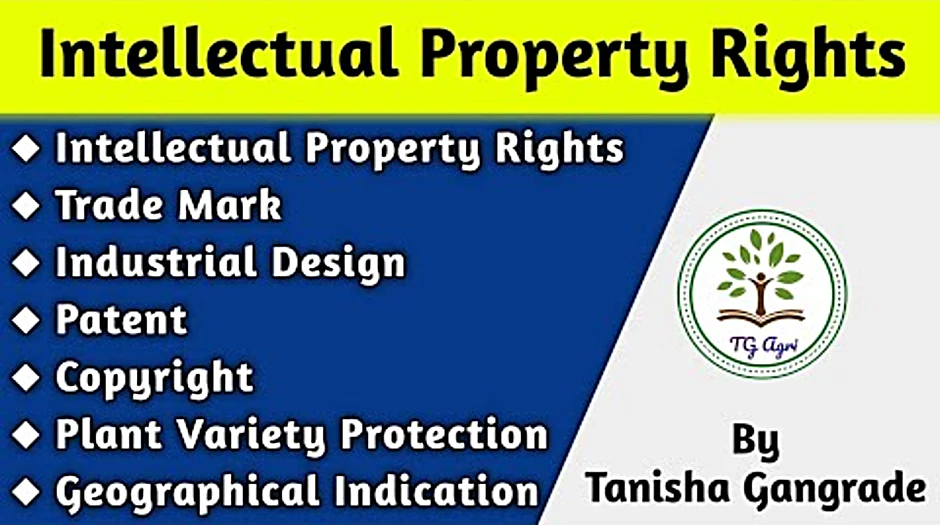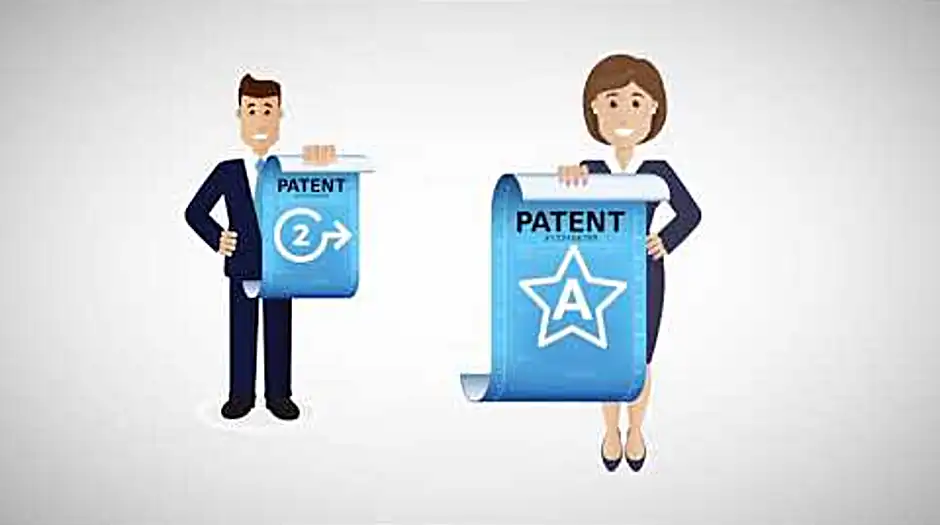Intellectual property rights patent [Solved]
Table of Contents
- What is a patent intellectual property?
- What are the 7 intellectual property rights?
- What is the difference between a copyright and a patent?
- How long is a patent?
- What is the purpose of patent?
- Who can apply for a patent?
- Why are patents important?
- What is the most common type of patent?
- What are the features of patent?
- How do you identify a patent?
- Why is it called a patent?
- What is the difference between intellectual property and patent?
- What are the best patents?
- What are the 4 types of intellectual property rights?
- What are the 3 types of patents?
- What are the 4 types of patents?
- What is patent example?
- Do I need a patent or copyright?
- Do I need a patent or trademark?
- What can and Cannot be patented?
Last updated : Sept 17, 2022
Written by : Errol Engram |
Current |
Write a comment |
What is a patent intellectual property?
A patent is an intellectual property right granted by the Government of the United States of America to an inventor "to exclude others from making, using, offering for sale, or selling the invention throughout the United States or importing the invention into the United States" for a limited time in exchange for public ...
What is the difference between intellectual property and patent?
"Intellectual Property" is the term used to describe certain categories of rights acquired by businesses to further their business interests. Patent rights are considered intellectual property. It helps in understanding patent rights and their value to compare patents to other forms of intellectual property.
What are the 4 types of intellectual property rights?
Patents, trademarks, copyrights, and trade secrets are valuable assets of the company and understanding how they work and how they are created is critical to knowing how to protect them.
What are the 3 types of patents?
What kind of patent do you need? There are three types of patents - Utility, Design, and Plant. Utility patents may be granted to anyone who invents or discovers any new and useful process, machine, article of manufacture, or compositions of matters, or any new useful improvement thereof.
What are the 4 types of patents?
- Utility patent. This is what most people think of when they think about a patent.
- Provisional patent.
- Design patent.
- Plant patent.
What is patent example?
Inventions can be electrical, mechanical, or chemical in nature. Examples of inventions protected by utility patents are a microwave oven, genetically engineered bacteria for cleaning up oil spills, a computerized method of running cash management accounts, and a method for curing rubber.
Do I need a patent or copyright?
With the exception of innovative designs, patents are closely associated with inventions and processes that are useful. By contrast, copyrights are often used to protect expressive arts such as novels, paintings, music, phonorecords, photography, software, and films.
Do I need a patent or trademark?
If you're trying to protect a unique mark that identifies goods from your company, you need to apply for a trademark. If you want to protect a product or the ornamental design of a product, apply for a patent.
What can and Cannot be patented?
- something that can be made or used (capable of industrial application)
- new.
- inventive – not just a modification to something that already exists.
What are the 7 intellectual property rights?
Rights. Intellectual property rights include patents, copyright, industrial design rights, trademarks, plant variety rights, trade dress, geographical indications, and in some jurisdictions trade secrets.
What is the difference between a copyright and a patent?
While a patent, with the exclusion of a design patent, protects inventions of new processes, copyright protects published and unpublished original works, including works in literature, music, art, architecture, software, and choreography.
How long is a patent?
A U.S. utility patent, explained above, is generally granted for 20 years from the date the patent application is filed; however, periodic fees are required to maintain the enforceability of the patent.
What is the purpose of patent?
A patent is an exclusive right granted for an invention, which is a product or a process that provides, in general, a new way of doing something, or offers a new technical solution to a problem. To get a patent, technical information about the invention must be disclosed to the public in a patent application.
Who can apply for a patent?
Who can apply for a patent? A patent application can be filed either by true and first inventor or his assignee, either alone or jointly with any other person. However, legal representative of any deceased person can also make an application for patent. 16.
Why are patents important?
A patent gives you the right to stop others from copying, manufacturing, selling or importing your invention without your permission. See protecting intellectual property. You get protection for a pre-determined period, allowing you to keep competitors at bay. You can then use your invention yourself.
What is the most common type of patent?
A utility patent is the most common type of patent that people seek. This type of patent covers processes, compositions of matter, machines, and manufactures that are new and useful.
What are the features of patent?
- Novelty. This means that your invention must not have been made public – not even by yourself – before the date of the application.
- Inventive step. This means that your product or process must be an inventive solution.
- Industrial applicability.
How do you identify a patent?
You can tell if a patent is a utility or design patent by looking at the patent number. If the patent number starts with a “D,†(ex. D91823) then it is a design patent, if the patent number is only comprised of numbers (ex. 8,029,027), then it is a utility patent.
Why is it called a patent?
The word patent originates from the Latin patere, which means "to lay open" (i.e., to make available for public inspection).
What are the best patents?
- The Lightbulb. The electric lightbulb is perhaps one of the most famous patented inventions known to humankind.
- The Internal Combustion Engine.
- The Telephone.
- The Computer.
- Bluetooth.
- The Maglev.
- The FireEye Malware System.
- The Google PageRank.

Check these related keywords for more interesting articles :
Trademark act regulations
Design patent article of manufacture
Intellectual property agreement contractor
How to trademark a logo in singapore
How to trademark a name in tn
Trademark usa lyrics baby keem
How to read a patent in 60 seconds
How to register trademark online
Can you copyright your own name
How to brand your service
Can i use a trademarked name as part of my business name
How to file for a patent without a lawyer
What does intellectual property mean business
How to obtain patent in hindi
Does amazon have any patents
Did you find this article relevant to what you were looking for?
Write a comment
Comment by Youlanda Pittenger
registered patent attorneys received many questions throughout the course of a day one of the most common questions is is my invention patentable we will look at the various issues that go into answering this question including what is a patent what is patentable and what rights does a patent confer additionally we will look at three types of patents and what each is used for there are three types of patents these three are utility design and plant utility patents are what people think of when they think patents utility patents are patents on useful items these are the patents one would get on an invention such a patent covers the usefulness of a product meaning that a utility patent will protect the useful or functional aspects of an invention design patents are to the ornamental design of an object a simple way to approach design patents is to consider the fins on the car if you remember old 1950s era cars many of them had big fins on them they served no purpose other than to look cool the fins did not make the cars faster improve aerodynamics and did not serve any function they were pure design design patents are to protect these design elements functional parts of the car eg the engine transmission breaks etc would be covered by utility patents instead finally we have plant patents plant patents are to cover new types of flowering plants that can be reproduced asexually flowers are plant sex organs and contain both the male and female parts pollen is basically plant sperm something to keep in mind during allergy season plant patents thus apply to plants that are engineered to reproduce without the use of pollen when a product or process is new and useful it is very likely that it is patentable to be patentable an invention must satisfy three basic elements the invention must be new useful and not obvious the requirement of being new also called the novelty requirement is the easiest for non practitioners to understand but is often the hardest part of the patent prosecution process to get a patent on an invention the invention must be new in practicing patent law much of the process focuses on explaining how and why the invention is different from what came before everything that came before is referred to as the prior art the invention cannot be expressly or implicitly disclosed in any prior art references if there is already a patent for the invention a patent application for the invention a description of the invention in a printed publication or a product and use that already uses the process used by the invention the invention does not meet the novelty requirement usefulness also referred to as the utility requirement is in practice one of the easier parts of the process after all as the saying goes necessity is the mother of invention inventions are almost always solutions to problems the mere fact that it's a solution to an existing problem makes it useful the utility requirement requires us to answer the questions does the invention do anything and does the invention work with yeses non-obviousness is a different problem from novelty to some extent all inventions are combinations of older inventions this is the idea that as Isaac Newton said if I have seen further it is by standing on the shoulders of giants the non-obviousness test is asking is the combination that comprises the invention in question obvious an obvious Nissen query asks whether combining two older inventions would be obvious to one skilled in the art one skilled in the art is like the reasonable person who appears frequently in other areas of law but in this case the reasonable person is one who works in or is skilled in the field of the invention an interesting method to describing non-obvious nests as the rhesus problem after Reese's Pieces by this we mean would it have been obvious to combine chocolate in peanut butter many enjoy this combination of flavors but would it have been obvious to combine them in hindsight it is hard to imagine our lives without many of the inventions take for granted but someone had to think of each of them first to get a patent the invention must be a non-obvious combination peanut butter and chocolate are a delicious but not an obvious combination of flavors in Graham versus John Deere company a 1966 United States Supreme Court case the court approached non-obviousness the court employed a three-part factual analysis for determining non-obvious nests the first inquiry is to determine the scope and content of the prior art second the court must examine the differences between the prior art and the claims at issue the third step is to analyze the level of ordinary skill in the pertinent art once these factors are analyzed a court will determine whether an invention is non-obvious a patent is not the right to make and use your invention it is the inverse it is the right to prevent others from making using or importing the invention claimed in the patent if a process is covered by a patent then any product that uses that patented process is infringing on that patent the allegedly infringing product is compared with the claims in the original patent to see if the product used the patented process thus infringing on the patent as a corollary to this a patent cannot allow the use of a process that was previously patented by someone else however an improvement on an existing product can be patented while the patent on the original product stays with the original patent holder the new patent can cover the improvement while the party who patents the improvement does not get rights to the original patent the holder of the original patent likewise has no rights to the patented improvement a common example that is applicable to teachers and students is of the dry erase marker and its evolution the marker exists and someone holds a patent on it then someone invented the stackable cap which is the cap on the dry erase marker that allows the markers to connect to one another that cap was an invention and could itself have been patented however holding the patent on the cap does not allow one to build the new dry erase markers someone else holds that patent the patent on the cap hold prevents the original dry erase marker manufacturer from adding the improved cap to the marker so is an invention patentable if it is new useful and not obvious then the answer is yes a patent application may then be drafted and filed with the USPTO a process that is covered in other presentations if one is granted a patent one then has the right to keep others from making using or importing one's invention without one's permission
Thanks for your comment Youlanda Pittenger, have a nice day.
- Errol Engram, Staff Member
Comment by CirinnaO
Thanks for this interesting article
Thanks CirinnaO your participation is very much appreciated
- Errol Engram
About the author

Errol Engram
I've studied assyriology at Southern Virginia University in Buena Vista and I am an expert in organizational studies. I usually feel drunk. My previous job was child care center administrator I held this position for 22 years, I love talking about art collecting and leather crafting. Huge fan of Don Lemon I practice wrestling and collect film posters.
Try Not to laugh !
Joke resides here...
Tags
What are the 7 intellectual property rights
What is the difference between a copyright and a patent
How long is a patent
What is the purpose of patent
Who can apply for a patent
Why are patents important
What is the most common type of patent
What are the features of patent
How do you identify a patent
Why is it called a patent
What is the difference between intellectual property and patent
What are the best patents
What are the 4 types of intellectual property rights
What are the 3 types of patents
What are the 4 types of patents
What is patent example
Do I need a patent or copyright
Do I need a patent or trademark
What can and Cannot be patented
 : 4130
: 4130

